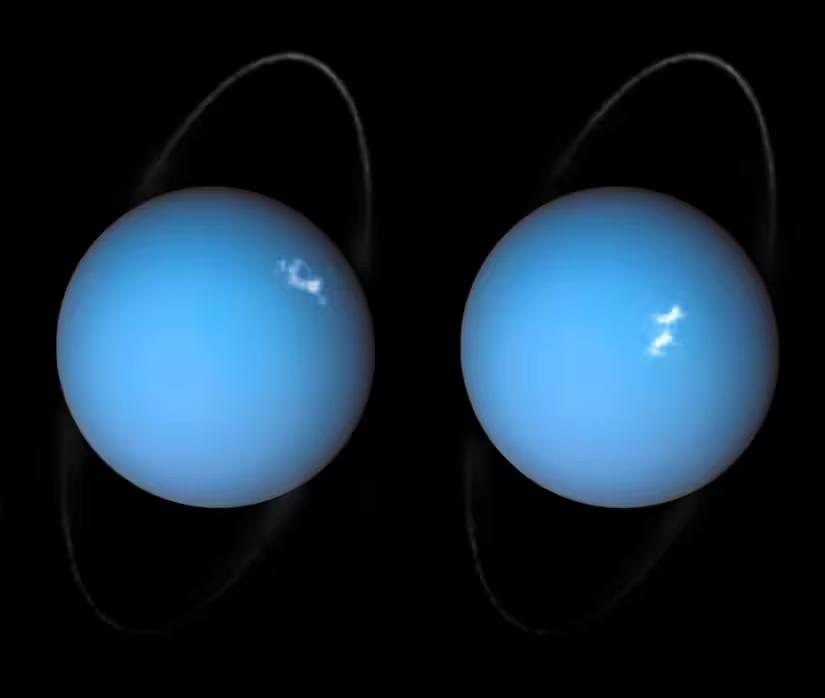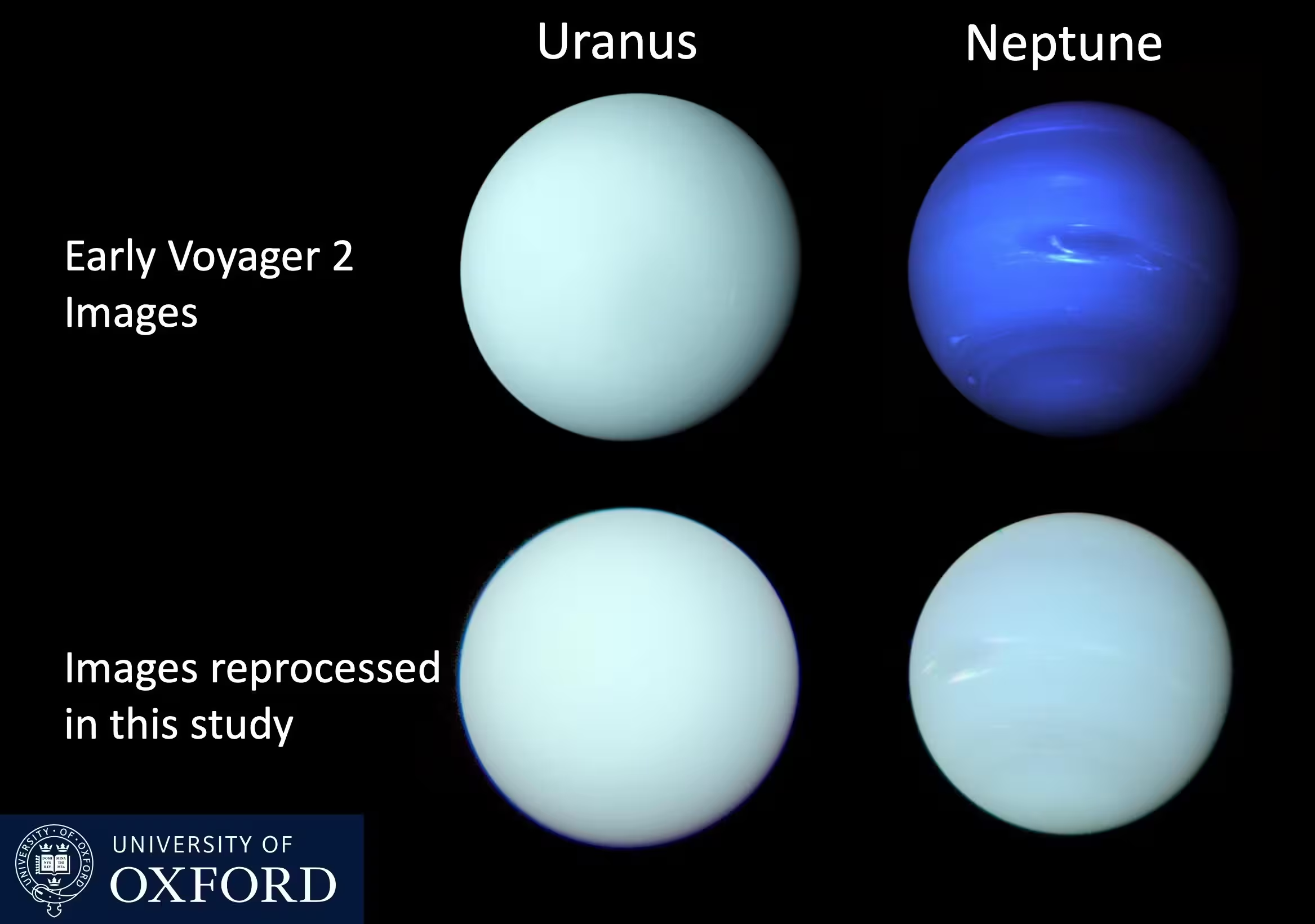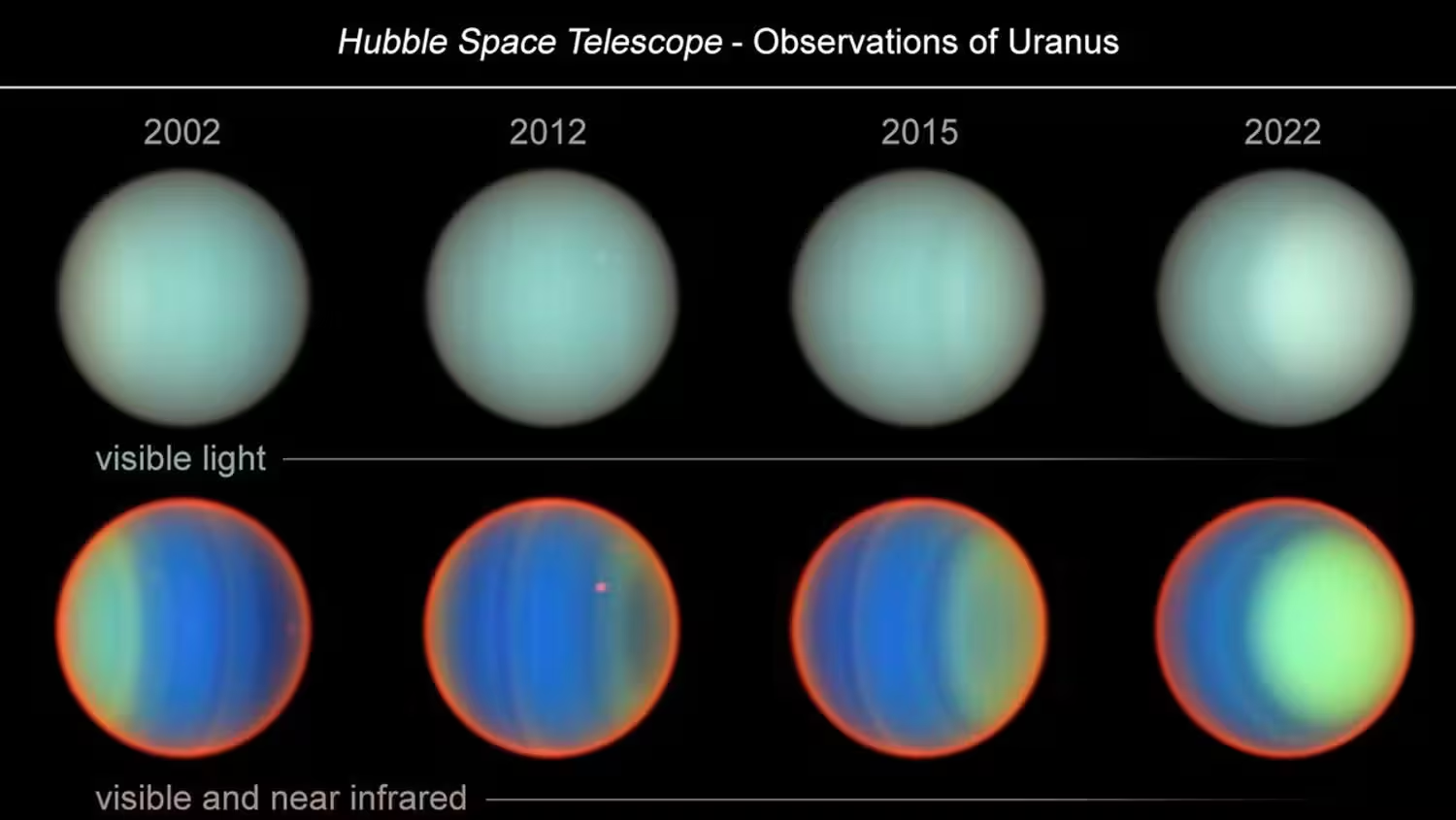6 Minutes
The Unique Colors of Planets: Setting the Scene
Gazing at the planets of our solar system through a powerful telescope, the giant gas worlds—Jupiter and Saturn—reveal mesmerizing bands of browns and yellows. Yet, their appearance pales in comparison to the vivid hues of the ice giants: Uranus and Neptune. These distant planets stand out for their striking blue-green shades, a rarity in our primarily red and yellow-hued cosmic neighborhood. What causes Uranus, in particular, to glow with its signature cyan shade, and why do its colors differ from those of Earth or even Neptune?
Earth: The Classic "Pale Blue Dot"
Earth itself is celebrated as the "Pale Blue Dot," a term popularized by astronomer Carl Sagan after viewing our planet from the distant vantage of Saturn. Earth's blue appearance mainly stems from its vast oceans, which cover approximately 70% of the surface, and, to a lesser extent, from the way its atmosphere scatters sunlight. Water absorbs red wavelengths of light efficiently, allowing blue and some green light to reflect back, imparting a blue cast to both our oceans and the planet as seen from space.
In stark contrast, most other planetary bodies in our solar system feature much warmer palettes: Jupiter and Saturn appear pale yellow-brown, Mars is renowned for its rusty red deserts, and Venus shines a soft, sulfuric yellow. Some moons even exhibit muted reds or browns, but a deep, pure blue is almost unique—Earth and the ice giants claim this color almost exclusively.

What Colors Uranus Blue? The Methane Factor
While Earth's blue hue is mainly a product of water, Uranus owes its distinctive blue-green color to a very different source: methane gas (CH4). This simple molecule—commonly found on Earth as a major component of natural gas and produced by living things—plays a pivotal optical role in the atmospheres of the ice giants.
When sunlight strikes Uranus, methane in the planet's upper atmosphere absorbs light in the red part of the visible spectrum. Unlike the gas giants where ammonia and other compounds dominate, methane acts as a selective filter: red light energy is absorbed and transformed into heat, while green and blue wavelengths are scattered and reflected back into space. This process, similar in principle (though not in mechanism) to how Earth's oceans filter and reflect blue light, results in Uranus's signature turquoise glow.
It's important to note that this is different from the way Earth's atmosphere creates blue skies. There, Rayleigh scattering disperses shorter (blue) wavelengths of sunlight in all directions more than longer (red) wavelengths, granting the sky its luminous blue quality—but during sunrises and sunsets, deeper passes through thicker atmosphere scatter more colors, giving rise to gold and red hues.

The Scientific Reason Behind the Blue-Green Tint
Methane's role doesn't end with Venusian aesthetics. It also absorbs infrared light with high efficiency, contributing to Uranus's unique greenhouse properties. Compared to Jupiter and Saturn, whose clouds contain less methane and more ammonium and water vapor, Uranus's higher methane concentration ensures that only blue and green light escape to our telescopes, painting the planet in cool tones.
Origins of Methane on Uranus: No Life Required
On Earth, methane is a classic biosignature, associated with biological activity: livestock digestion, decaying plant matter, wetlands, and certain bacteria all produce significant methane. This connection, however, doesn't apply in the deep freeze of Uranus, where no known forms of life exist.
So, where did Uranus's methane come from? Scientists believe that non-biological processes early in the solar system's history combined simple molecules—such as carbon monoxide and hydrogen—yielding methane through a process called "methanation." Over millions of years, this methane became sequestered in icy planetesimals (small, early-forming planetary bodies) and dust grains that later coalesced to form Uranus.
In some planetary environments, methane can also arise from chemical reactions between water, carbon-bearing minerals, and heat—a mechanism called "serpentinization." While this process could occur on certain moons, such as Saturn's Titan or potentially even ancient Mars, there's no evidence that similar chemistry significantly affects Uranus today. On those worlds, the tantalizing prospect of methane being produced by living organisms cannot be entirely dismissed, but on Uranus, all signs point to an abiotic origin.

Key Insight: Methane Across the Solar System
Methane's presence is not unique to Uranus. It is detected in a variety of settings—on Saturn's moon Titan, in trace amounts on Mars, and, of course, in vast reserves within comets and icy bodies. Each instance provides crucial clues about how organic chemistry shaped the early solar system, and shapes our search for life beyond Earth.
Neptune and Uranus: Similarities and Subtle Differences
Both Uranus and Neptune owe their vibrant blue tones to methane in their upper atmospheres, but this superficial similarity hides notable differences. Neptune's color is often more intensely blue, while Uranus sometimes appears greener or hazier.
The distinction, researchers believe, comes down to atmospheric clarity. Uranus sports a thicker atmospheric haze, likely composed of complex organic aerosols formed by sunlight-driven chemical reactions. Recent studies, including findings from the Hubble Space Telescope, suggest that seasonal changes can rearrange these hazes, producing subtle long-term shifts in Uranus's appearance. In contrast, Neptune experiences frequent "methane snow"—the condensation of methane into solid particles—which clears its upper atmosphere of haze in much the same way that rain clears smog from Earth's skies. The result is Neptune's deeper blue hues and Uranus's paler, greener tint.
Ongoing Mysteries and the Need for Future Exploration
Despite being in our solar system's cosmic backyard, Uranus and Neptune remain among the least understood of the major planets. Their extreme distance from Earth, cold temperatures, and enigmatic atmospheres challenge even the most advanced space observation technologies.

Recognizing these scientific gaps, NASA and other space agencies are developing mission concepts to investigate the ice giants up close. If scheduled plans proceed, a new mission could launch to Uranus within the next decade, aiming to provide unprecedented insights into its composition, climate systems, and possibly its mysterious magnetic field. Such investigations are expected to transform our understanding of planetary formation, the behavior of exotic ices and gases, and the chemical evolution of giant planets.
Conclusion
Uranus's captivating blue-green color serves both as a visual landmark and as a scientific puzzle. Unlike Earth's blue, which comes from oceans and atmospheric scattering, Uranus owes its hue to methane's selective absorption of red light and reflection of blue and green. This atmospheric chemistry not only distinguishes Uranus from jovian neighbors like Jupiter and Saturn but also underscores the planet's unique place among the "ice giants."
With future spacecraft missions on the horizon, scientists hope to unravel the remaining mysteries of Uranus and its twin, Neptune. In solving the riddle of these distant worlds, we will not only expand our knowledge of planetary science but also enhance our understanding of planetary atmospheres, chemical evolution, and the many pathways nature takes to produce color and complexity in the cosmos.



Comments